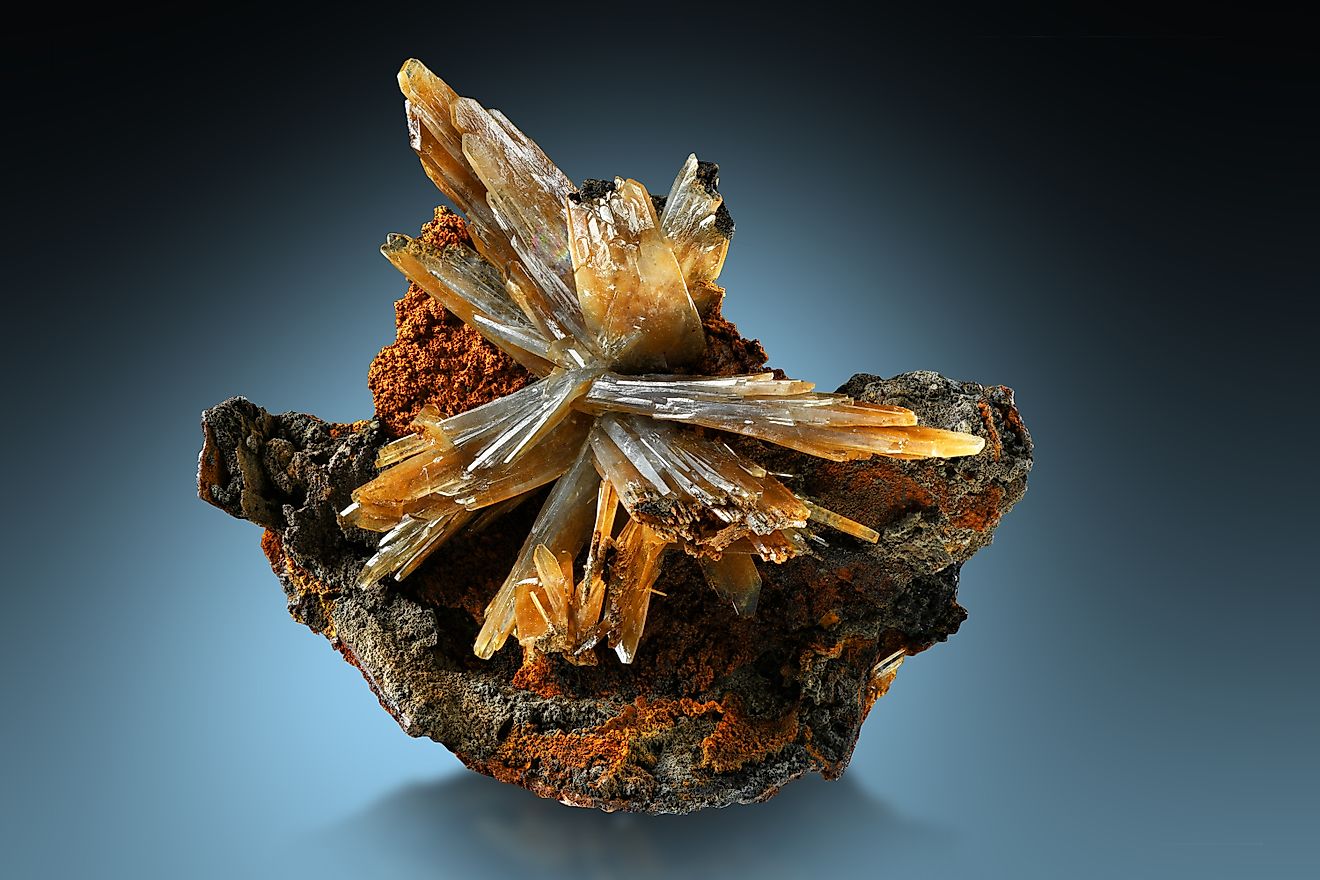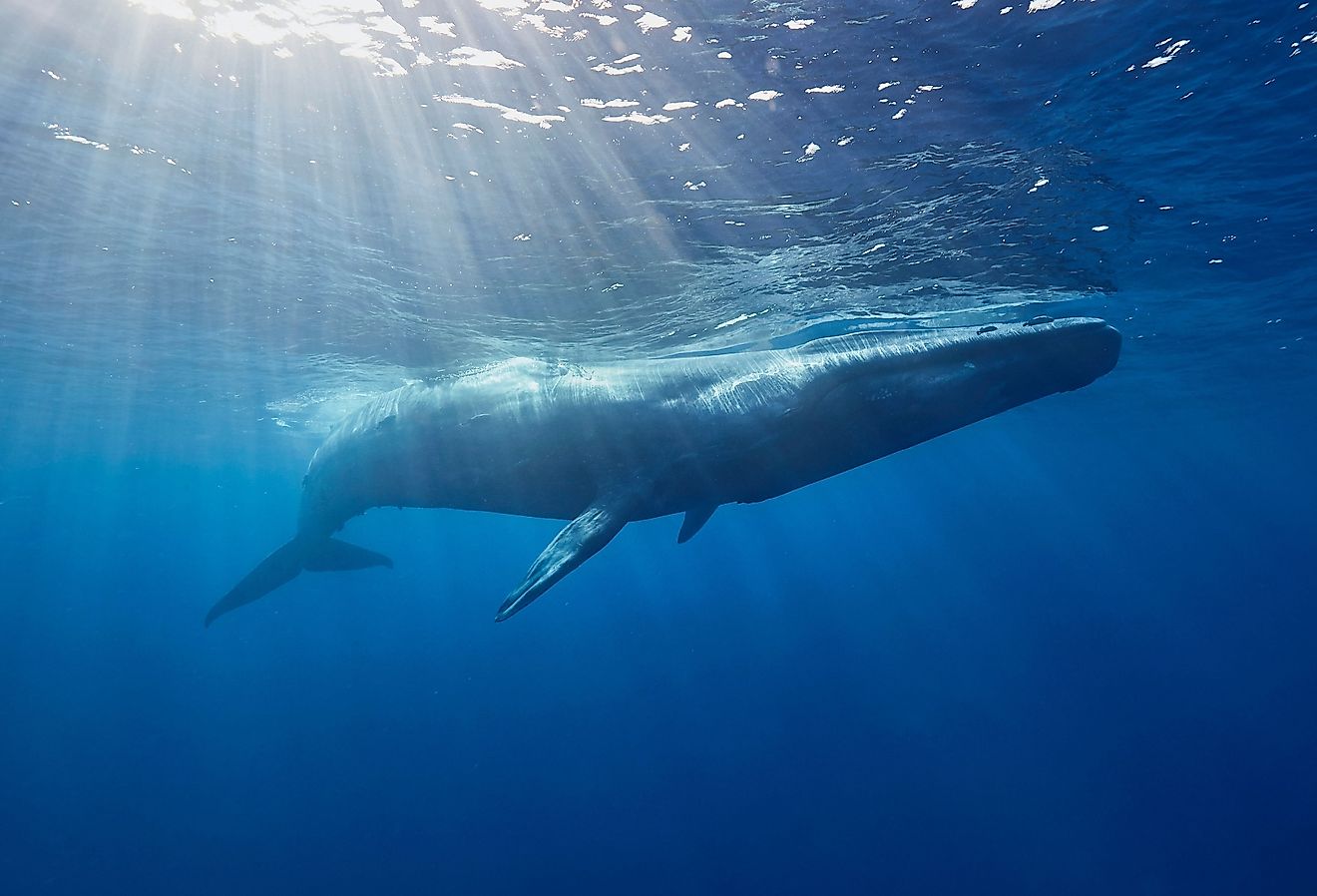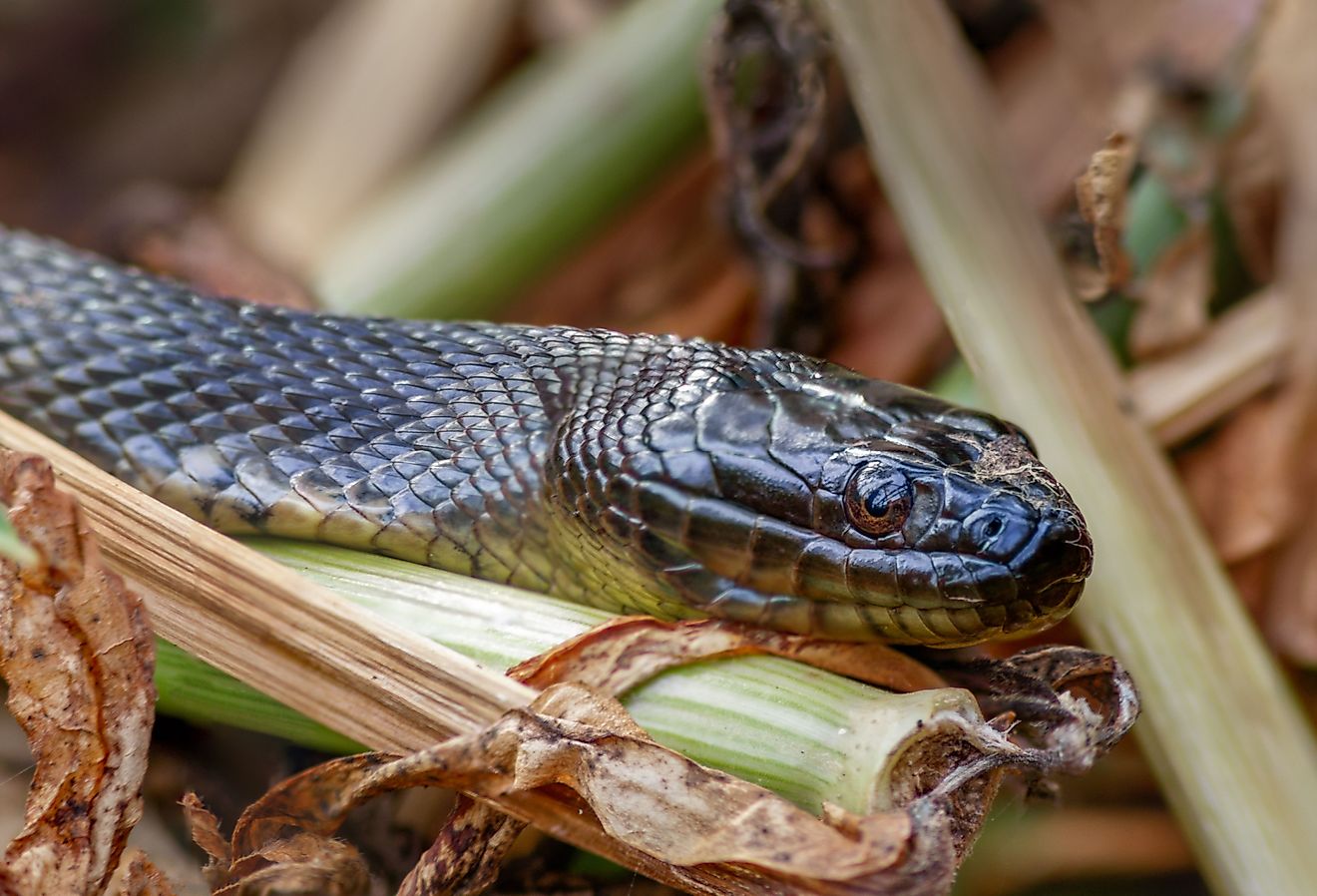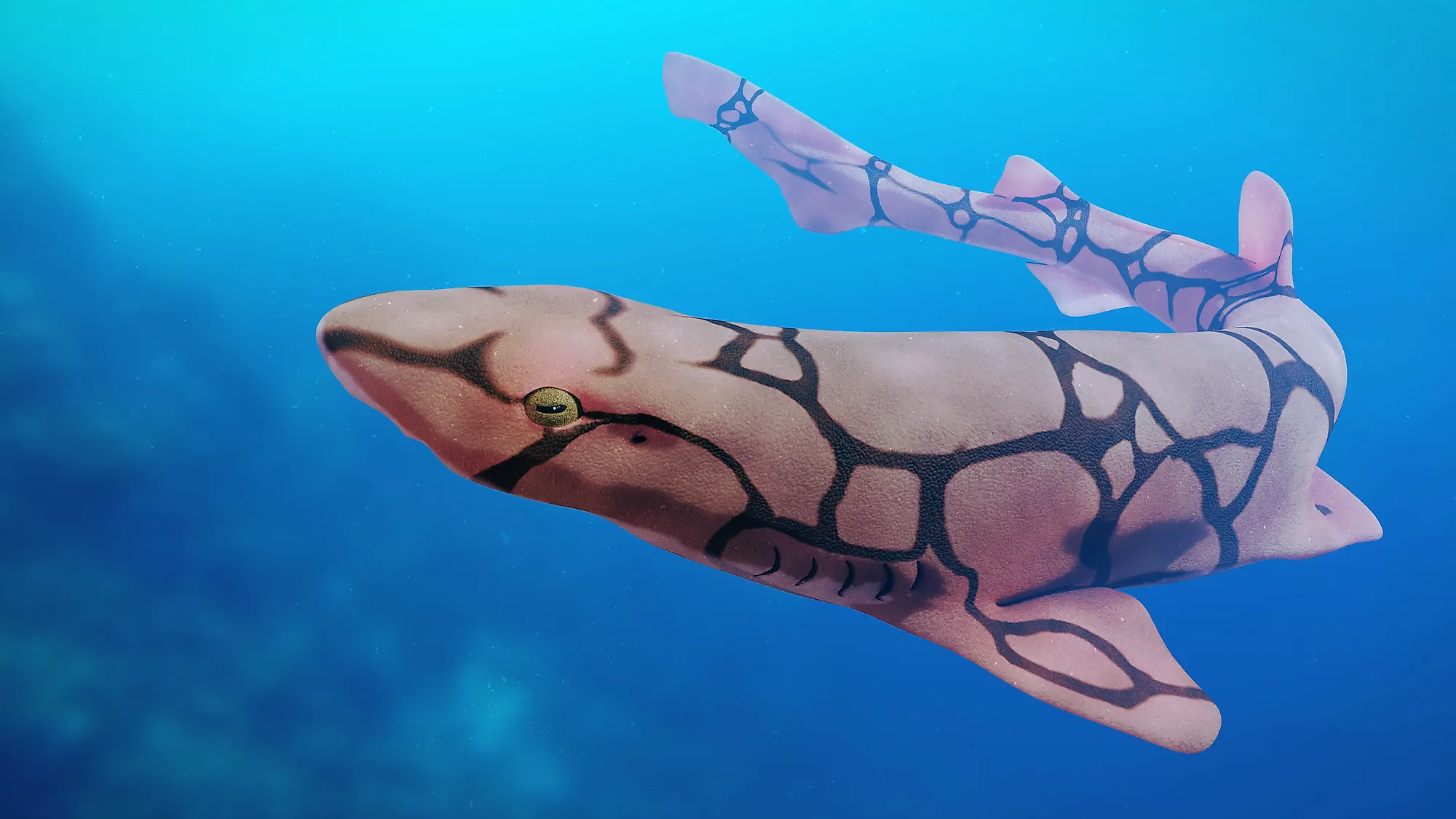
10 Amazing Sharks You Never Knew Existed
- A sawshark is a distinct looking shark named for its long saw-like snout.
- Leopard sharks are so named for their dark saddle-shaped spots along their back and fins. The dark grey or black patterning on an otherwise silver body resembles a similar spotting to that of a leopard.
- Blue sharks live in open water and are very migratory. They can be found in almost all parts of the ocean, with a huge range.
Sharks are some of the most intriguing and often misunderstood creatures on Earth. Frequently perceived as dangerous killers or threats to humans, they are generally gentle and calm, usually avoiding contact with people. There are over 1,000 shark species in the world's oceans and seas, ranging from the tiny dwarf lantern shark to the massive whale shark. Here is a list of ten unusual shark species you might not be aware of, each distinguished by its unique look or uncommon behavior.
Leopard Shark
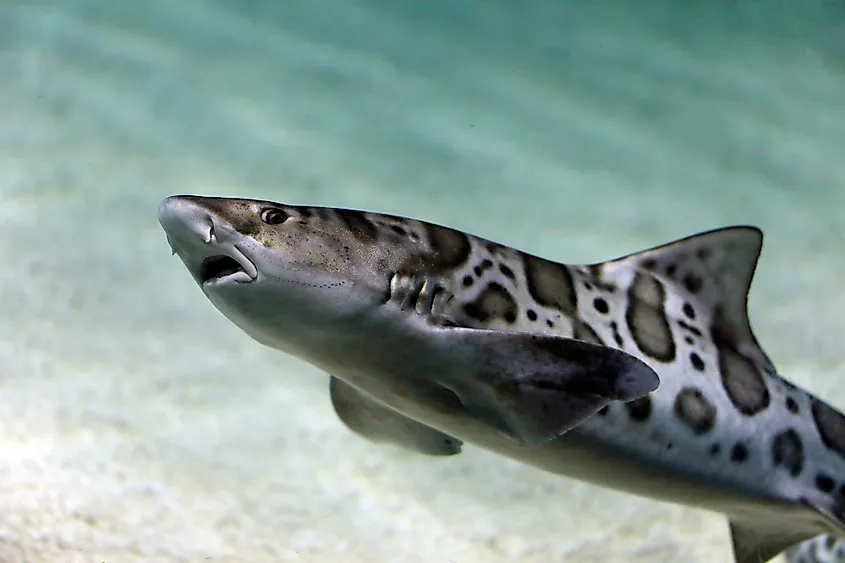
Although not as rare as some other sharks on this list, the leopard shark is less known due to its limited habitat. It primarily inhabits the coast from Oregon to the Gulf of California. During warmer months, it can often be seen in shallow bays and coves, like those in La Jolla, particularly during its breeding season.
Leopard sharks are named for their dark saddle-shaped spots along their back and fins. The dark grey or black pattern on an otherwise silver body resembles the spotting seen on a leopard. Unlike real leopards, however, leopard sharks live in nomadic schools or groups. They can grow between four and seven feet long, but are slender and relatively gentle, which is why they seek the security of a large group.
Pyjama Shark

This specific species of shark might seem fictional, but it is indeed a real species called Poroderma afriocanum. They are notable for their distinctive longitudinal stripes that stretch from head to tail. This striped pattern probably inspired their name, as the dark and light bands resemble traditional striped pajamas.
Pyjama sharks also have two dorsal fins, which are positioned much further back on their bodies than most sharks, whose typical fin is roughly midway along the body. These sharks are relatively small, growing to about two to three feet when mature. They primarily inhabit the southeast Atlantic and western Indian Oceans and are believed to be endemic to the South African coastline.
Basking Shark
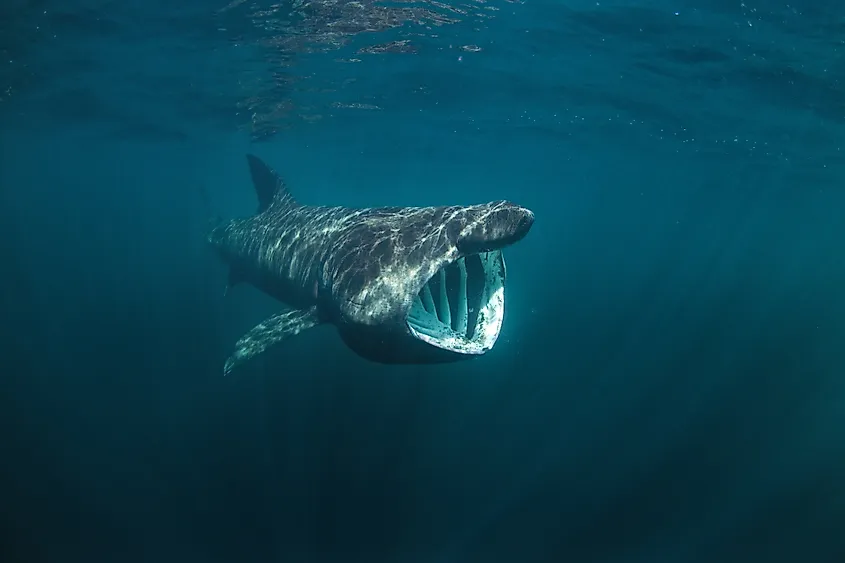
The basking shark is the second-largest fish in the ocean, after the whale shark. It can reach lengths of up to 45 feet (15 meters) and weigh approximately 10,000 pounds (4.5 metric tons).
The basking shark gets its name from its behavior of drifting slowly along the ocean surface during warm summer months. The sharks seem to be basking in the sun’s warmth and were named after this tendency. Like their whale shark cousins, basking sharks feed by filtering large amounts of water through gill-like filters in their mouths. They can filter up to 4,000,000 pounds of ocean water each hour, consuming plankton and tiny sea creatures.
Spotted Wobbegong
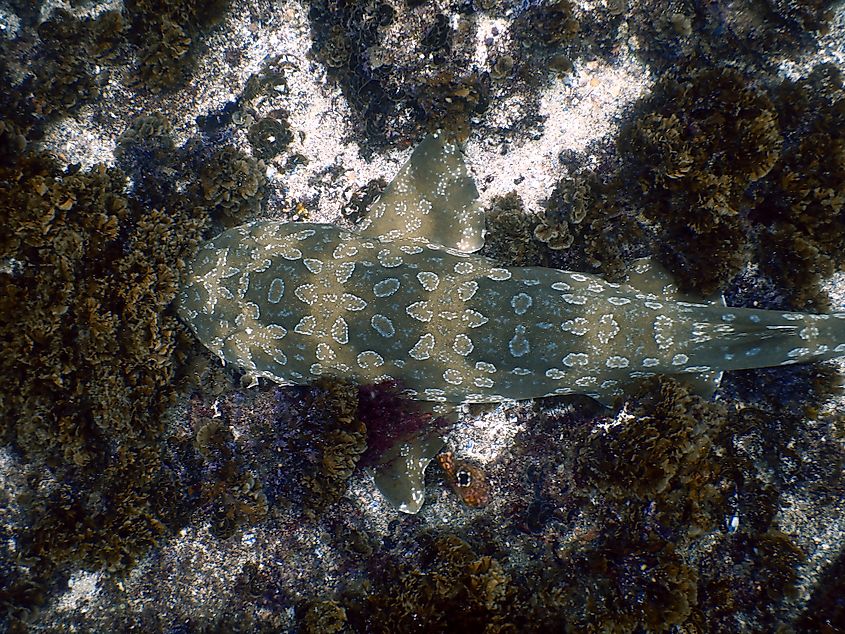
Spotted wobbegong sharks are characterized by their mottled appearance, featuring yellow-green and brown spots that serve as camouflage. This coloration enables them to blend seamlessly into the reef environments where they reside and hunt. Wobbegongs possess two dorsal fins located below the pelvis, short tail fins, and notably broad pectoral and pelvic fins. Their primary habitat is the eastern Indian Ocean, along the southern coast of Australia. These sharks have a low, flattened silhouette and a flat head, making them resemble catfish. They also feature nasal barrels and hang tassels on their body and head.
Chain Catshark
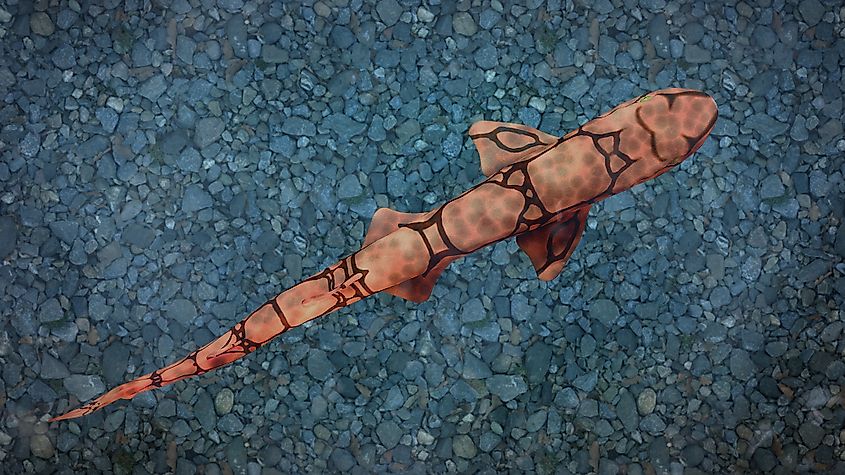
The chain catshark is a type of ground shark that is biofluorescent, meaning it harnesses natural luminescence to attract others of its kind. The chain catshark is light gray in color, like most sharks, but features a dark grayish-black pattern across its body that resembles a chain link fence. This pattern helps the shark camouflage when resting on the ocean floor among rubble and rocks, and the chain pattern also mimics reflective shapes created by light passing through the water. Chain catsharks live in the western and northwest Atlantic Ocean and can grow to about two feet in length.
Zebra Shark
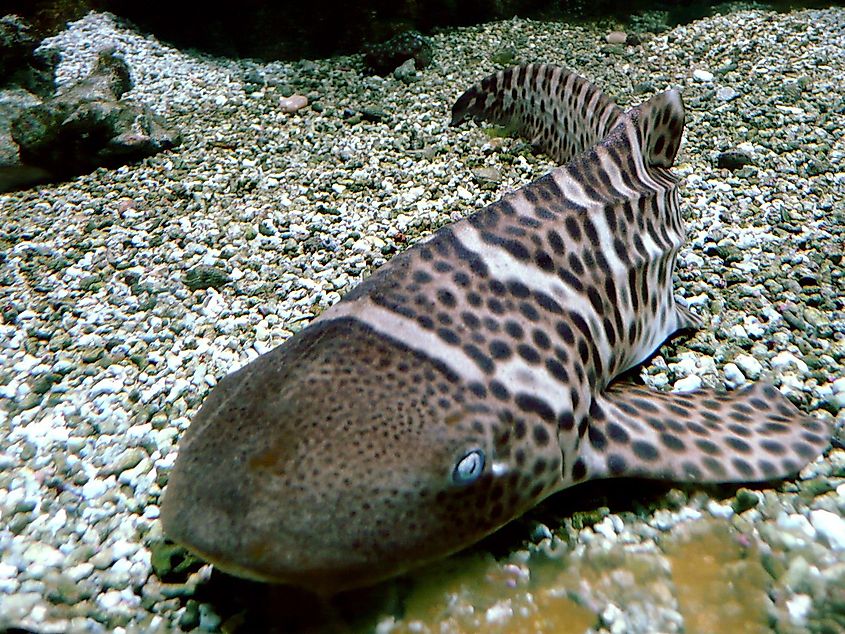
Zebra sharks are a confusingly named shark, as their patterns and markings differ with age. When young, the zebra sharks have a dark brown and yellow stripe, and it is these stripes that are thought to have given the shark its zebra name. Once the sharks reach maturity, however, their stripes fade away, and the sharks have a yellow-brown skin with dark circular spots much like a cheetah or a leopard.

This spotting pattern has led the zebra shark to occasionally be mis-identified as a leopard shark. On average, zebra sharks grow to be between five and six feet long, and live amongst coral reefs and continental shelves in the Indo-west Pacific, eastern Africa through to Japan and New Caledonia.
Sawshark
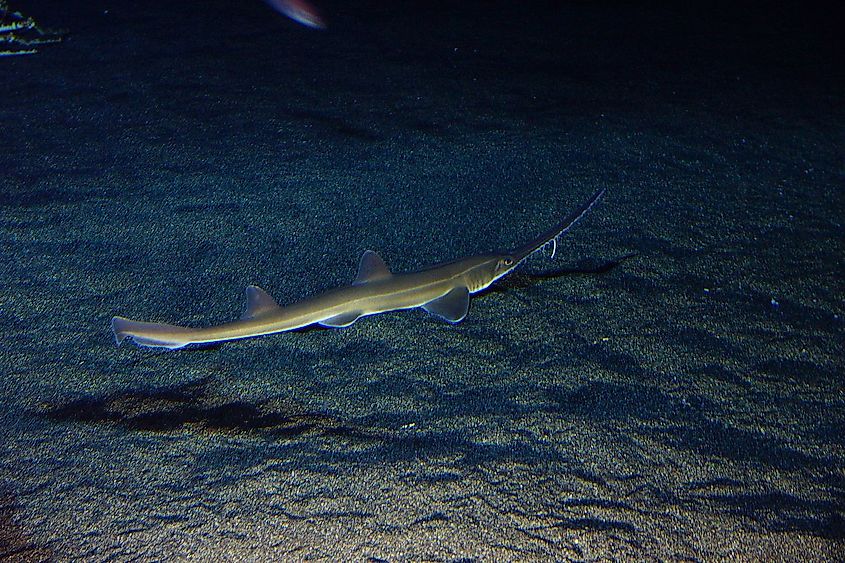
A sawshark is a uniquely shaped shark named for its long, saw-like snout. The rostrum, which extends from its head, is long and slender, lined with sharp, saw-like teeth that it uses to slash at and strike down its prey. There are nine different species of sawsharks, but all have some form of this distinctive saw-like snout.
Sawsharks are frequently mistaken for sawfish, which also have saw-shaped snouts. However, a sawfish is a ray, whereas a saw shark belongs to the shark family.
There are two main ways to distinguish between the two species. First, pectoral fins (those on the animal's side) on sharks are not connected to the shark's head, while on rays, they are. Additionally, sawsharks have barbels on their saws, whereas sawfish do not.
Tiger Shark

Tiger sharks are named for two main reasons. First, young tiger sharks look like tigers because they have dark stripes on their bodies. These stripes help them hide from prey, providing protection until they grow large enough to hunt on their own. Second, tiger sharks are known for being fierce hunters, similar to the ferocity of tigers.
Though sharks generally do not attack humans unprovoked, tiger sharks are responsible for the second highest number of attacks on humans, after great white sharks. Tiger sharks can grow to be 10 to 14 feet in length, and weigh 850 to 1,400 pounds, and will eat just about any type of prey, another reason they are deemed to be so deadly. Generally, though, they steer clear of humans, hunting just about any other type of sea life from sea turtles to fish, to stingrays, to clams.
Epaulette Shark
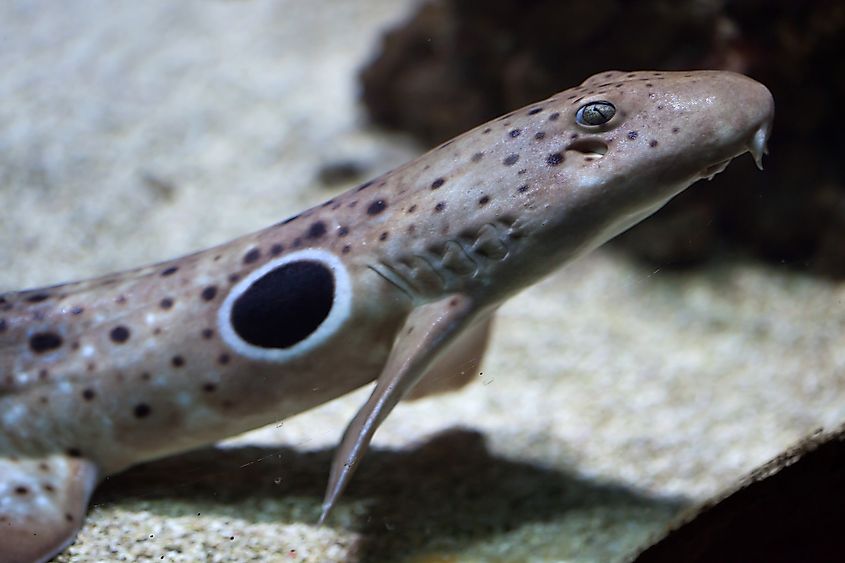
Epaulette sharks are small and slender, at about three and a half feet long, and are a unique type of shark for a few reasons. Firstly, their name comes from the presence of a large white rimmed black spot behind their pectoral fins which resembles a military epaulette. This is part of a large spotted appearance which helps them camouflage on the seafloor.
The large epaulette spots are meant to resemble big eyes to scare off predators. Epaulette sharks are also one of the few sharks that can ‘walk’. Of course, these sharks do not actually walk like-legged creatures, but epaulette sharks use their extra-strong pectoral fins to push themselves off rocks and coral while hunting for food. This use of their fins makes it look as if the sharks are walking along reefs and ocean floors with their fins.
Blue Shark

Blue sharks live in open water and migrate frequently. They can be found in nearly all parts of the ocean, covering a vast range. They inhabit both temperate and tropical waters and grow to about ten feet long. The blue shark has a long, slender body with extended pectoral fins.
These sharks get their name from their dark blue color, which blends in well while they are travelling through the open waters. Their bellies are very light, nearly white, to similarly blend in when being seen from below. Their long slender shape helps them move very quickly through water, when needed, and they can be speedy hunters. Blue sharks generally feed on smaller prey such as small fish and squid.


